Do you have a question about the Honda CB500FA 2018 and is the answer not in the manual?
Explains the meaning of safety signal words: DANGER, WARNING, and CAUTION.
Provides essential guidelines to enhance rider safety during operation.
Describes the meaning of various labels and symbols found on the motorcycle.
Details important safety measures related to riding and protective apparel.
Provides guidelines for safe riding practices and motorcycle handling.
Advises against unauthorized accessories and modifications that may affect safety.
Guidelines for safely loading luggage and cargo onto the motorcycle.
Identifies key components and their locations on the motorcycle.
Explains the motorcycle's digital instrument cluster and its functions.
Identifies and explains the function of various motorcycle switches.
Step-by-step procedure for starting the motorcycle engine.
Explains the 6-speed gear pattern and safety interlock.
Explains how the emergency stop signal activates during hard braking.
Instructions and precautions for refueling the motorcycle.
Information on storage features like the helmet holder and document bag.
Details the contents of the provided tool kit.
Why regular maintenance is crucial for safety and performance.
Guidelines for performing maintenance safely.
Details recommended maintenance intervals, tasks, and service checks.
Essential information and checks before performing maintenance.
Guidelines for using genuine parts and ordering components.
Information on maintenance-free batteries and emergency procedures.
How to check and replace blown fuses.
Procedures for checking and adding engine oil.
Procedures for checking and adding coolant.
Procedures for checking brake fluid and brake pads.
How to check the side stand operation and safety interlock.
Procedures for inspecting and adjusting the drive chain.
Procedures for checking and adjusting clutch lever freeplay.
How to check throttle operation and freeplay.
Procedure for cleaning the crankcase breather tube.
Adjustments for headlight aim, brake lever, and suspension.
Steps to troubleshoot engine start issues when HISS indicator is active.
Steps to diagnose engine overheating indicated by the coolant temperature gauge.
General section for troubleshooting warning lights.
Troubleshooting and repair for tyre punctures.
Troubleshooting common electrical issues.
How to troubleshoot a dead battery.
How to replace a burned-out light bulb.
How to locate and replace fuses in the main fuse box.
Details about the ignition key, HISS system, and key care.
Explains ignition switch, engine stop switch, odometer, tripmeter, and HISS system.
Guidelines for cleaning, polishing, and maintaining the motorcycle's appearance.
Guidelines for storing the motorcycle for extended periods.
How to safely transport the motorcycle.
Information on environmentally friendly cleaning and waste disposal.
Location and importance of frame and engine serial numbers.
Information on using fuels with ethanol blends and potential risks.
Information about the three-way catalytic converter and its protection.
Details on dimensions, weight, wheelbase, and other major component specs.
Details on tyre size, type, pressure, and tread depth.
Specifications for engine oil capacity, brake fluid, and coolant.
Specifications for drive chain lubricant, slack, and standard chain/sprockets.
Details on bulb types and fuse ratings.
Torque values for various motorcycle components during assembly/maintenance.
Explains the meaning of safety signal words: DANGER, WARNING, and CAUTION.
Provides essential guidelines to enhance rider safety during operation.
Describes the meaning of various labels and symbols found on the motorcycle.
Details important safety measures related to riding and protective apparel.
Provides guidelines for safe riding practices and motorcycle handling.
Advises against unauthorized accessories and modifications that may affect safety.
Guidelines for safely loading luggage and cargo onto the motorcycle.
Identifies key components and their locations on the motorcycle.
Explains the motorcycle's digital instrument cluster and its functions.
Identifies and explains the function of various motorcycle switches.
Step-by-step procedure for starting the motorcycle engine.
Explains the 6-speed gear pattern and safety interlock.
Explains how the emergency stop signal activates during hard braking.
Instructions and precautions for refueling the motorcycle.
Information on storage features like the helmet holder and document bag.
Details the contents of the provided tool kit.
Why regular maintenance is crucial for safety and performance.
Guidelines for performing maintenance safely.
Details recommended maintenance intervals, tasks, and service checks.
Essential information and checks before performing maintenance.
Guidelines for using genuine parts and ordering components.
Information on maintenance-free batteries and emergency procedures.
How to check and replace blown fuses.
Procedures for checking and adding engine oil.
Procedures for checking and adding coolant.
Procedures for checking brake fluid and brake pads.
How to check the side stand operation and safety interlock.
Procedures for inspecting and adjusting the drive chain.
Procedures for checking and adjusting clutch lever freeplay.
How to check throttle operation and freeplay.
Procedure for cleaning the crankcase breather tube.
Adjustments for headlight aim, brake lever, and suspension.
Steps to troubleshoot engine start issues when HISS indicator is active.
Steps to diagnose engine overheating indicated by the coolant temperature gauge.
General section for troubleshooting warning lights.
Troubleshooting and repair for tyre punctures.
Troubleshooting common electrical issues.
How to troubleshoot a dead battery.
How to replace a burned-out light bulb.
How to locate and replace fuses in the main fuse box.
Details about the ignition key, HISS system, and key care.
Explains ignition switch, engine stop switch, odometer, tripmeter, and HISS system.
Guidelines for cleaning, polishing, and maintaining the motorcycle's appearance.
Guidelines for storing the motorcycle for extended periods.
How to safely transport the motorcycle.
Information on environmentally friendly cleaning and waste disposal.
Location and importance of frame and engine serial numbers.
Information on using fuels with ethanol blends and potential risks.
Information about the three-way catalytic converter and its protection.
Details on dimensions, weight, wheelbase, and other major component specs.
Details on tyre size, type, pressure, and tread depth.
Specifications for engine oil capacity, brake fluid, and coolant.
Specifications for drive chain lubricant, slack, and standard chain/sprockets.
Details on bulb types and fuse ratings.
Torque values for various motorcycle components during assembly/maintenance.
| Engine Type | Liquid-cooled parallel-twin |
|---|---|
| Bore x Stroke | 67.0 mm x 66.8 mm |
| Compression Ratio | 10.7:1 |
| Fuel System | PGM-FI electronic fuel injection |
| Ignition | Computer-controlled digital transistorized with electronic advance |
| Transmission | 6-speed |
| Final Drive | Chain |
| Front Brake | Single 320 mm wave disc with two-piston caliper |
| Rear Brake | Single 240 mm wave disc with single-piston caliper |
| Front Tire | 120/70ZR-17 |
| Rear Tire | 160/60ZR-17 |
| Seat Height | 785 mm |
| Power | 47 hp (35 kW) @ 8, 500 rpm |
| Torque | 43 Nm @ 7, 000 rpm |
| Front Suspension | 41 mm telescopic fork |
| Rear Suspension | Pro-Link single shock |
| Wheelbase | 1410 mm |
| Curb Weight | 192 kg |


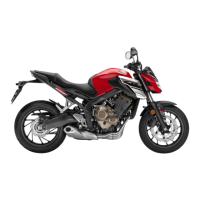
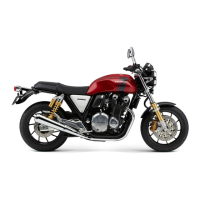

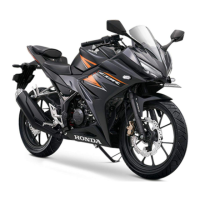



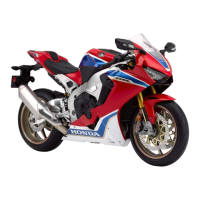
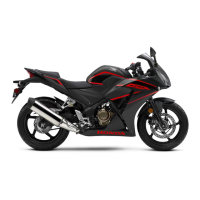
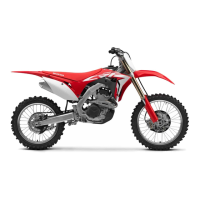
